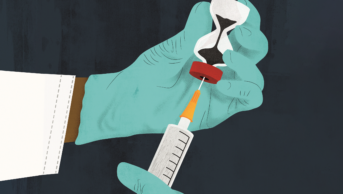
Communication plays an important part in our everyday life, especially in my line of work. I have recently received emails where the communication did not come across as intended. One email in particular was really demotivating – whereas I know in face-to-face communication the sender has the opposite effect.
This led me to think about the effect unclear communication has on patients, like the patient whose family brought in six months’ worth of statins. They were never taken, but always collected. Why? Another patient told me he had not taken his statins because he had been told about side effects. Perhaps the prescriber or pharmacist did not communicate clearly with them about the possible side effects or they were not given an opportunity to relay their concerns about them? Perhaps they thought that they should be collecting them, partly to please the prescriber, partly because they believe they may not receive other treatments if they declined the statin? I have heard examples of both in practice.
In critically ill or sedated patients, medicines adherence is less of a problem, provided the nurses administer the drugs. Communication to healthcare colleagues in this case can be straightforward, such as “I’ve just prescribed X, please can you give it”, or more complex, such as explaining how to give a complicated infusion or why certain drugs should be given and not omitted.
I believe that the sense of hearing is one of the last senses people lose when they are critically ill, so the critical care team members often talk to unconscious patients to let them know who we are, and what we are doing. But to provide proper reassurance, and gain cooperation with procedures such as turning a patient, we need to go beyond just speaking words.
The best examples I see, and the ones I try to emulate, are those where the speaker uses tone of voice and inflexion to reassure, combined with touch. I recently experienced a good example of this as I watched a consultant explain to a paralysed and seemingly unresponsive patient just what was going on and which treatments he was going to receive. He used straightforward language, a reassuring tone of voice, and held the patient’s hand throughout.
For patients who are conscious, it is important to remember that good communication is a two-way process. Not only do we need to be clear about the message we want to impart, but the patient must have the opportunity to communicate back their interpretation of the message, their own priorities and concerns. I will never forget the patient who protested that all she wanted was a glass of water, despite the loud presumption by colleagues that she needed a nice cup of tea!
Emma Graham-Clarke, MPhil, MRPharmS, FFRPS, is consultant pharmacist for critical care at Sandwell and West Birmingham Hospitals NHS Trust


